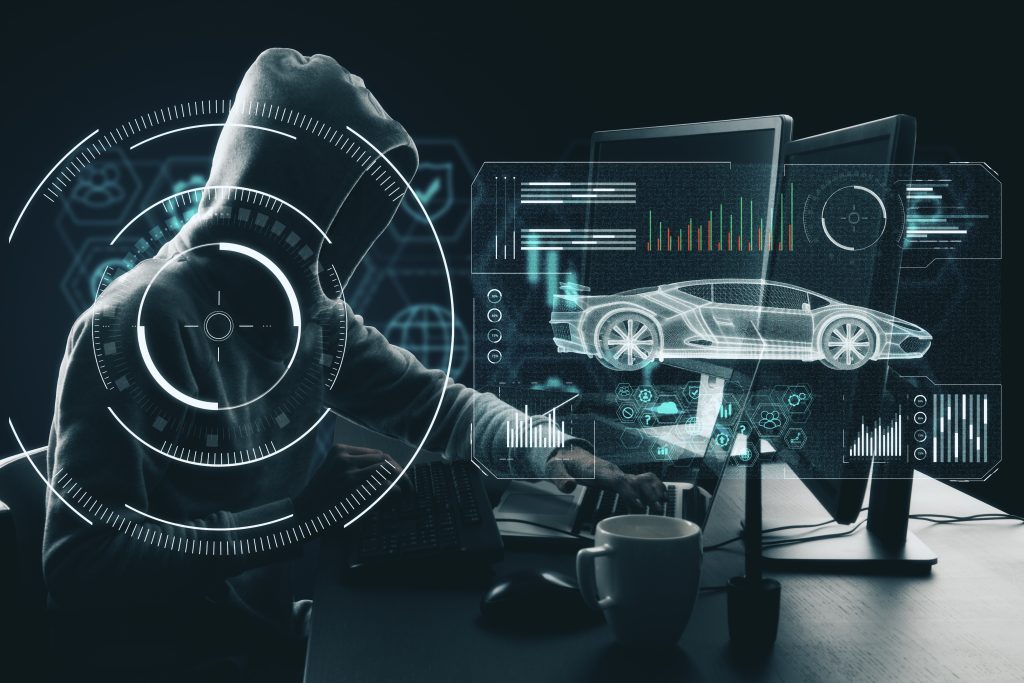As soon as a system is connected to the internet, it becomes a potential target for attacks. From small companies to fortune 500s and top influencers, we’ve seen numerous reports of data being stolen by hackers. Cybersecurity threats and attacks are also becoming a concern for the automotive sector. There are predictions that by 2030, there will be 125 million E.V.s on the road.
With the rise in digitization, a large number of these vehicles will be connected to the internet. Automotive companies must implement adequate cybersecurity protections as vehicles become more connected and autonomous. Let’s discuss this in detail.
Automotives Are Especially Vulnerable to Cyber Threats
The automobile industry is one of the most innovative sectors in the world. Cars used to just be driven by a wheel and an engine. Now they’re essentially a data network on wheels, with many more connection points to hack than ever before. However, this also comes with new vulnerabilities and greater responsibility for safety. Connected, electric, and fully autonomous vehicles bring with them a new range of cyber threats that should be considered.
Smart vehicles
Smart-connected vehicles are especially vulnerable to cyberattacks. Cybercriminals can hijack Electronic Control Units (ECU) to bring about a number of safety hazards, like rudderless driving, unintended braking, and unauthorized airbag opening.
E.V.s
Electric vehicles are great for the environment, but their electrical insides are vulnerable to hacks. It’s the battery packs, commercial chargers, and wired-in network that are the main cause for concern. When hackers target these vulnerabilities, they can
- decrease the battery life of an electric car to half.
- jam the vehicle’s control systems while charging at a public station.
- gain control over systems through the net.
These are just some of the things that hackers can do in electric vehicles.
Autonomous vehicles
Technology is evolving, and with it, so are attacks on vehicles. As a result, autonomous vehicles are vulnerable to attacks such as being hacked by hackers or disrupted by DDoS attacks. Automotive digital systems are ripe for exploitation by hackers. Machine learning and A.I. methods create new vulnerabilities that lead to more opportunities for hackers.
Common Types of Automotive Cyber Attacks
All this connected technology has vastly improved vehicle tech. A potential downside to this is that cyber-criminals will have a lot more access to sensitive information.
Hackers can now launch attacks online on your vehicle and cause problems like poor performance, reliability, and safety. Custom automotive solutions development must focus on preventing cyberattacks. To prevent cyber attacks, you must know the common types of cyber attacks. The following are the most common types of automotive cyber-attacks that the automotive industry faces today.
Hacked airbag deployment
An airbag can be deployed without prior warning and may cause injury to the car’s occupants or a collision with another vehicle.
Remote unintended braking
Hackers can remotely activate braking systems on cars or trucks. This causes the driver to lose control.
Sudden uncontrolled vehicle acceleration
Hackers can control the speed of the vehicle and cause the driver to lose control.
Unauthorized navigation system access
When malware is inserted into a vehicle’s GPS, it can lead to a sense of confusion for the driver.
Vehicle lock-out
New hacking methods are forcing car owners to get locked out of their vehicles. The hackers then demand a ransom payment to unlock these vehicles.
With all of these new attacks, there is a critical concern for the safety of drivers and highways. For a lot of people, cars are like their second home. Almost all people find driving to be an enjoyable experience. Hackers can spoil this experience.
The Impact on Automobile Companies
Millions of vehicles across many car manufacturers have been recalled in the last decade over security vulnerability issues. Manufacturers are often unsure of how to respond to these new cybersecurity challenges. Automotive security often takes a back seat when companies focus on developing connected products and systems. This leaves automotive OEMs exposed to various risks. We have detailed the impact of cyber threats on automotive companies.
Increased legal exposure
OEMs are at high risk of being subject to crippling legal actions in the event an attacker causes injury or death by hacking into their products.
Loss of consumer confidence
Every time there is a cyber breach, consumers become more wary about the safety of their vehicles.
Reduction in sales revenue
If a high-impact cyber-attack hits the automotive OEM chain, it can have a big impact on sales revenue.
Read More: Tips For Choosing the Best Auto Transport Services
Steps to Ensure Robust Cybersecurity for Automotive
One can take the following steps to improve the cyber protection of automobiles.
Use the latest security protocols
Updating and upgrading your data security protocols will increase automotive cybersecurity. A great way to improve your security is by following basic measures such as generating strong passwords, encrypting all sensitive data, implementing multi-factor authentication, and updating systems. One of the best ways for the automotive industry to protect against cyberattacks is through thorough preparedness. It’s important for employees and customers to not only know what may harm them but also how to identify it.
Secure interfaces to the outside world
Vehicle communication interfaces like Bluetooth connect the car with the outside environment. To ensure optimum automotive cybersecurity, these interfaces need to be as secure as possible. To make sure it’s safe, the vehicle will only communicate with known and trusted entities. Strong authentication and encryption are necessary to protect the data that is being shared by the vehicle.
Conclusion
The automotive industry is constantly at risk of cyberattacks. Safety for vehicles and our high-tech society is paramount. At iFour, we provide state-of-the-art automotive cybersecurity solutions. Contact us to secure your automotive company from cyber threats.

